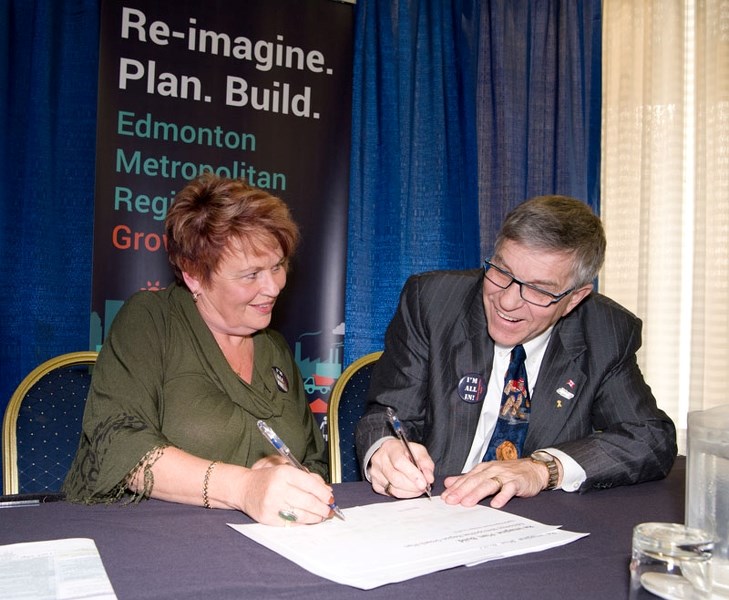St. Albert residents should share in some $5 billion in savings in the next 30 years now that local mayors have signed off on a new growth plan for the Edmonton region, says this city's mayor.
But they could also be on the hook for about $49,000 this year to get that plan off the ground.
Capital Region Board members voted 22-2 in favour of the new Edmonton Metropolitan Region Growth Plan Thursday. Parkland and Leduc County were opposed.
The plan, which must still be approved by the province, sets out how the Edmonton region will grow over the next 30 years.
This plan sets new goals for the protection of farmland, the enhancement of economic competitiveness and addressing climate change, said Strathcona County Mayor Roxanne Carr. It could also preserve some 250 quarter sections of land that would otherwise be lost to urban sprawl.
"Had this plan been in place even five years ago, perhaps my municipality would not have lost 60 quarter sections of the richest land in Alberta to urbanization."
Edmonton Mayor Don Iveson noted that the plan was projected to save the region some $5 billion in infrastructure costs.
"Compact, contiguous growth improves the cost-effectiveness of growth, and cost-effectiveness is an important part of competitiveness," he said.
Iveson said the plan also reflects a consensus that local governments have to work together on economic development – something absent from the board's previous plan – which should bring more jobs to the region.
Board chair and St. Albert Mayor Nolan Crouse said this plan should mean more diverse housing and lower infrastructure costs for places like St. Albert.
"I believe it's the right thing (to do) and it replaces a two-foot pile of paper with 200 pages," he said, referring to the board's previous plan.
But the new plan also comes with a price tag. The board is asking for $1 million from its members in this year's budget to implement the plan, which works out to about $49,000 from St. Albert.
"We'll see if there's appetite at the board" for that, Crouse said.
What it does
The plan divides the capital region into three zones – central Edmonton, Edmonton's outskirts (including St. Albert) and everywhere else – and creates development rules for each.
The 125-page plan commits local governments to promote job growth, address climate change, plan affordable homes, encourage transit use, and conserve an adequate supply of prime agricultural land to provide local food for future generations.
The plan includes mandatory and voluntary density targets to reduce urban sprawl. St. Albert will be encouraged to put 17.5 per cent of its new homes into existing neighbourhoods, for example, and required to put at least 40 dwelling units onto each net residential hectare in new neighbourhoods.
Unlike the previous plan, the new document gives small communities a role to play in the region, said Morinville Mayor Lisa Holmes. Morinville, for example, is designated as a sub-regional centre that provides regional recreation, which meshes well with the town's plans to build a new rec-centre.
"It gives a role to every municipality, and I feel confident for Morinville that it gives us a lot of respect in the region."
Parkland County Mayor Rod Shaigec said his council questioned if the board was the right forum through which to protect farmland and promote economic growth, noting that the Metro Mayors Alliance was also looking at those issues. He also opposed the board's ask for $1 million to implement this plan.
"We just didn't think it prudent to go forward and expand the mandate at this point."
While Leduc County supported a regional growth plan, Mayor John Whaley said he opposed this one as its density requirements for Edmonton were too low, especially as they applied to the city's plans for the lands it wanted to annex from the county.
"If we're really serious about supporting prime agricultural lands for future generations, now's the time to stand up and do it."
Crouse said the plan would now go to the province for approval, which would likely take about a year. Local governments would then have to tweak their municipal development plans to comply with it.
The plan is available at capitalregionboard.ab.ca




